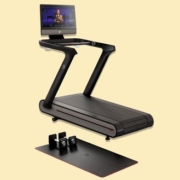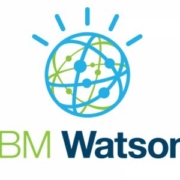From Digitally Distraught to Digitally Determined
Leveraging Digital Technology to Transform Your Business
France’s largest lighting manufacturer, Keria Luminaires, is well along on its digital transformation journey. “At Keria Luminaires, it has already been a decade since we started integrating digital transformation into our strategic plans,” says Sebastian Hours, the company’s vice-president and general manager. “Today, digital impacts the three principal avenues of Keria’s corporate strategy — the design and development of products, the customer experience, and organizational and process development.”
Keria counts itself among what IDC terms the “digitally determined,” companies that have begun to actualize their digital strategies. These companies, which represent roughly 46% of companies worldwide, are gaining what may prove to be a lasting advantage over competitors that are lagging in their vision or implementation of digital tech.
Digitally determined companies have a vision about digital transformation and know how best to implement it. Many of these companies are currently using digital transformation initiatives and approach to transform markets with new business models and services. Launching its “See Now, Buy Now” business model in 2017, Tommy Hilfiger announced that the company is “breaking all the rules and disrupting the fashion industry with new authentic experiences for consumers around the world.” It then “broke the rules” with TOMMYNOW SNAP, an app offered to 3.7 million customers in 21 countries. This app enables users to select products remotely and watch models display the clothes on their private runway, with the option to save favorite looks to a wish list that links to tommy.com for instant shopping.
Leaders of digitally determined companies typically insist on demonstrating the financial returns of digital business. These companies use metrics to track customer advocacy like net promoter scores, data capitalization measures for return on data-related investments, and digital operations measures to track their ability to transform and automate business processes.
Pret à Manger has more than 440 shops in the UK, and the company seeks to “look at what we are trying to achieve from the customer’s perspective, not from the shop’s perspective,” says company founder Julian Metcalfe. Pret à Manger’s customer satisfaction monitoring strategy enables it to create direct, ongoing contact with customers and monitor their experience. It also gives managers feedback on ways to improve the quality of food and daily customer interactions. In a recent Statista reporting of satisfaction with UK coffee shops, Pret à Manger ranked first in almost all categories.
Finally, digitally determined organizations are more likely to have an integrated platform strategy. Only 33% of companies have a fully integrated enterprise-wide technology architecture enabling digital products, services, and experiences, while modernizing and integrating the internal IT environment. Alibaba’s use of platform technology is reshaping ecommerce globally. Over the last two decades, the Chinese retailer has built up one of the world’s largest distributed-computing networks, linking supply chain, logistics, product search and recommendations, customer service, and customer experience.
“Digital transformation is now considered to have a bona fide place in corporate strategy,” notes Hours. IDC predicts that, over the next two years, 50% of total technology spending among businesses will be on data-related investments. By 2022, 80% of companies’ revenue growth will depend on digital offerings and operations. For companies seeking to thrive in the new digital economy, it is essential to address digital challenges now.











